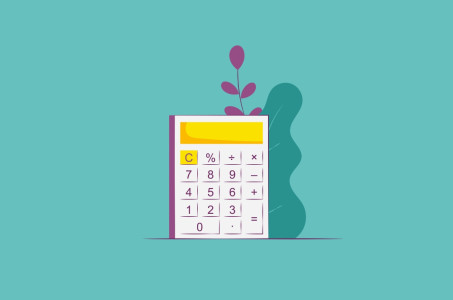Switching KiwiSaver providers? It’s easier than you think
Have you considered switching KiwiSaver providers but haven’t taken the leap, because fear and uncertainty were holding you back? You’re not alone.
We’ve just conducted a survey of 1,000 Kiwis aged 18 and over, and interestingly, we found that many people have thought about switching KiwiSaver providers before deciding to put it off – either because they didn’t know how to do it, or they didn’t want to make mistakes.
The good news is that switching providers is easier than you think, and making an informed decision about it can significantly impact your retirement outcomes. So, here are some key things to know.
Switching funds vs switching providers
Before we start, let’s clarify one of the most persistent confusions: switching funds and switching providers are two very different things:
- Switching funds means increasing or reducing the risk level you’re investing in, within the same provider’s scheme. For example, you may be invested in a growth (higher-risk) fund and decide to switch to a conservative (lower-risk) fund.
Generally speaking, the only good reason to switch funds is because your risk profile has changed (e.g., you are getting closer to retirement or plan to withdraw for your first-home purchase, so you need to protect your savings from volatility). On the other hand, a not-so-good reason to switch funds is to ‘react’ to market volatility. This unfortunately happened in March 2020, when many KiwiSaver members hastily switched to a lower risk fund in a misguided attempt to ‘hide’ their money from the downturn(1).
And as a result, they turned on-paper losses into actual losses, and missed out on the subsequent recovery. The bottom line? Avoid switching funds in the spur of the moment, keep a cool head and stick to your long-term plan. - Switching providers means choosing a KiwiSaver provider that’s most appropriate to your changing needs. And if you move from one provider to another, between funds that have the same level of risk (e.g., balanced-balanced, growth-growth), then there should be no risk of crystallising your losses and you can actually reap key benefits. Let us tell you a bit more about this.
Why many Kiwis would like to switch KiwiSaver providers – but don’t
Recent data from Inland Revenue (2) revealed that, in January and February 2023, the number of people switching KiwiSaver providers was unusually low. To give you an idea, just 13,085 people switched in those two months, compared to a total of 23,413 in the same months in 2021.
Why, you may ask? Our survey offered some interesting insights. According to our data, 50.6% of all respondents considered switching in the past 12 months, but only 44.6% actually made the switch. The remainder didn’t do it due to:
- Uncertainty in fund selection (32%)
- Lack of knowledge on the switching process (29%)
- Fear of making a mistake (25.8%)
We also asked what would encourage them to switch providers, and here are some factors that stood out:
- Higher returns with the new provider (41.4%)
- Lower fees (33.5%)
- Financial adviser recommendation (29.5%)
- Ethical investment options (27.6%)
When switching providers makes sense
Market volatility seems to have made people more cautious about their investments. Some may still remember the ‘big KiwiSaver switch’ of March 2020 and be reluctant to make a change, not fully understanding that switching funds and switching providers are two different things entirely.
But here’s the thing: if you’d like to make the most of your KiwiSaver plan, there’s a key difference between avoiding impulsive decisions and shying away from any decisions. In fact, it’s important to make proactive choices from time to time, to ensure that your KiwiSaver is aligned with your needs, goals, values, and circumstances.
In some cases, moving to a different provider can benefit you and your retirement outcomes. For example, you may find a KiwiSaver provider that:
- Offers a better service than you’re currently receiving, including better communication;
- Charges lower fees than the one you’re currently with – just don’t consider fees in isolation, as they’re not the only factor that matters.
- Has consistently delivered returns above average over a long period of time – Once again, it’s crucial not to choose your KiwiSaver provider based on high returns alone, and certainly not based on high returns in the short term as these always go up and down.
- Invests according to your values, which may mean avoiding certain industries and focusing on socially responsible investments.
In short, you deserve to be invested with a KiwiSaver provider that is aligned with who you are and is well-positioned to deliver the returns you need in order to achieve your goals. Now, the next question on your mind may be: how do I find the one?
What to look for in your KiwiSaver provider?
Looking for the right KiwiSaver provider for you? It all starts with researching your options. When comparing KiwiSaver funds, you need to look at the investment options, the performance and the fees you’ll pay, and balance these against the risk you’re prepared to take based on your risk profile.
Here are some key steps:
- Understand the investment options they offer – When it comes to risk, KiwiSaver providers usually offer a mix of different funds, from the more growth-focused to the more conservative. Other providers, like us at kōura Wealth, allow you to mix KiwiSaver funds to create a personalised portfolio that’s tailored to you – try our digital advice tool to build your recommended KiwiSaver plan in minutes.
- Look at the fees – As we said, fees are not the only thing that matters, but that’s not to say they don’t matter. Every dollar counts when saving for the future. So, make sure you factor this cost into your decision, assessing fees against services and historical performance.
- Assess the long-term returns – If the provider has consistently delivered above-average returns over a five-year period, it probably means they know what they’re doing. When reviewing their performance, only compare funds in the same categories (e.g., two growth funds as opposed to a growth fund and a conservative fund), as they invest in very different asset types.
Where to start? Check out independent fund comparison websites. Read customer reviews and explore each provider’s website to understand their investment approach and values: here’s more about kōura, to get the ball rolling. And last, but not the least, seek professional advice: it’s a great way to get a tailored recommendation based on your specific needs and goals.
Ready to switch? It’s quick and easy!
Once you’re confident that you’ve found your next KiwiSaver provider, switching is as straightforward as can be. You can change your KiwiSaver provider at any time, and apart from the initial decision, you really don’t have to do much. Here’s a step-by-step guide to what the process looks like:
- Complete the provider’s application form, either online or in person. This usually entails providing your personal details, IRD number, and selecting the KiwiSaver fund you wish to invest in. If you’d like to switch to kōura, you can start here.
- Your new provider will handle the rest. They’ll contact your current provider to request the transfer of your KiwiSaver balance and inform Inland Revenue of the change.
- The transfer process can take about two weeks.(3) During this time, your current provider will move your KiwiSaver balance to your new provider. Once the transfer is complete, you'll receive a confirmation from your new provider, and you can start monitoring your investments with them.
As you can see, switching KiwiSaver providers is a hassle-free process with invaluable potential benefits. After all, your KiwiSaver journey is a long one, so why not choose the right ‘companion’ to guide you along the way? Keep your goals top of mind and don’t settle for any provider, but look for one that’s aligned with you.
Sources:
1. Stuff - Millennials hit hardest by Covid KiwiSaver fund switch | Stuff.co.nz
2. Inland Revenue – KiwiSaver scheme transfer statistics
3. Inland Revenue – Changing to another provider
Disclaimer: Please note that the content provided in this article is intended as an overview and as general information only. While care is taken to ensure accuracy and reliability, the information provided is subject to continuous change and may not reflect current developments or address your situation. Before making any decisions based on the information provided in this article, please use your discretion and seek independent guidance.



